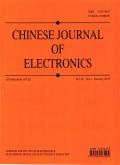EASA: Fine-Tuning SAM with Edge Attention and Adapters for Image Manipulation Localization
IF 3
4区 计算机科学
Q3 ENGINEERING, ELECTRICAL & ELECTRONIC
引用次数: 0
Abstract
The Segment Anything Model (SAM) is gaining attention for various applications due to its success in precise segmentation and zero-shot inference across diverse datasets. The image manipulation localization (IML) task, facing a lack of high-quality, diverse datasets, could benefit from SAM's strong generalization ability. However, the unique nature of the IML task presents a significant challenge: the vast distributional disparity between IML data and conventional visual task data makes it seem implausible to effectively transfer a pretrained model like SAM to this task. Models typically either forget previous knowledge or fail to adapt to IML's unique data distribution due to structural mismatches. To address this, we introduce the edge-attention SAM-adapter (EASA), which overcomes catastrophic forgetting and effectively adapts to IML's unique data distribution. Specifically, our EASA method mitigates the issue of catastrophic forgetting by employing adapter tuning strategy and designs a novel edge-attention branch effectively captures the subtle traces of edge manipulations in manipulated regions. In our experiments across six public datasets, our method significantly enhances performance in IML tasks compared to state-of-the-art methods, thus showcasing the potential of SAM in various downstream tasks previously considered challenging.EASA:微调SAM与边缘注意和适配器的图像处理定位
分段任意模型(SAM)由于其在不同数据集的精确分割和零概率推理方面的成功而受到各种应用的关注。面对缺乏高质量、多样化数据集的图像处理定位(IML)任务,SAM具有较强的泛化能力。然而,IML任务的独特性质带来了一个重大挑战:IML数据和传统视觉任务数据之间的巨大分布差异使得有效地将像SAM这样的预训练模型转移到该任务中似乎是不可能的。模型通常要么忘记了以前的知识,要么由于结构不匹配而无法适应IML独特的数据分布。为了解决这个问题,我们引入了边缘注意sam适配器(EASA),它克服了灾难性遗忘,并有效地适应了IML独特的数据分布。具体来说,我们的EASA方法通过采用适配器调优策略减轻了灾难性遗忘的问题,并设计了一种新的边缘注意分支,有效地捕获了被操纵区域中边缘操作的细微痕迹。在我们跨六个公共数据集的实验中,与最先进的方法相比,我们的方法显着提高了IML任务的性能,从而展示了SAM在以前被认为具有挑战性的各种下游任务中的潜力。
本文章由计算机程序翻译,如有差异,请以英文原文为准。
求助全文
约1分钟内获得全文
求助全文
来源期刊

Chinese Journal of Electronics
工程技术-工程:电子与电气
CiteScore
3.70
自引率
16.70%
发文量
342
审稿时长
12.0 months
期刊介绍:
CJE focuses on the emerging fields of electronics, publishing innovative and transformative research papers. Most of the papers published in CJE are from universities and research institutes, presenting their innovative research results. Both theoretical and practical contributions are encouraged, and original research papers reporting novel solutions to the hot topics in electronics are strongly recommended.
 求助内容:
求助内容: 应助结果提醒方式:
应助结果提醒方式:


